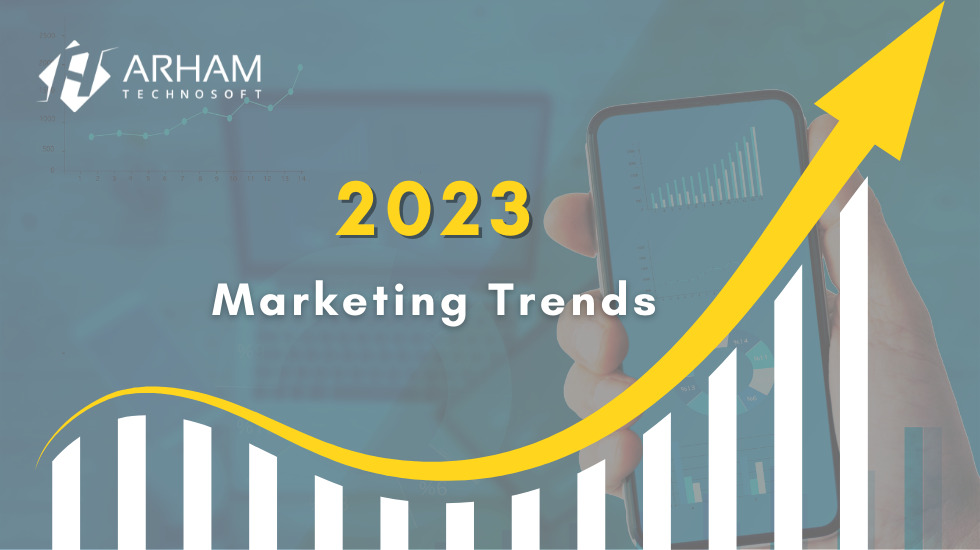2022 was the year of nostalgia, trust, humanization and participation! As 2023 arrives very quickly, let’s take the time to consult the marketing oracles to anticipate the 11 trends to integrate into your marketing strategy.
1. Inclusive marketing
Younger generation consumers expect brands to support diversity and inclusion in front of and behind the cameras. It is revealed by the Deloitte report that inspired this article!
Your target audience is changing. It now consists of consumers of various origins, genders or sexual orientations. To establish an effective and lasting connection with customers, brands must make these elements appear in their marketing messages. It goes through two crucial steps.
Alignment of your teams and suppliers with your target market
Your internal and external teams can help bridge the cultural, demographic and sociological gap between your brand and its customers. On your social networks or via your newsletter, highlight the diversity of your team, your commitments to minorities, and the inclusive commitments of your suppliers.
A reorganization of your campaigns
Your campaigns must carry the voices and faces of your audience’s commitments: ecology, body-positive, equity, etc.
Dove perfectly illustrates this point. For years, the brand has featured women of different sizes and ethnicities in its ads to include its entire audience. Recently, Dove even launched a “Beauty Without Retouching” campaign to promote self-esteem and take action against the dictates of beauty, which are often non-inclusive.
2. Employees as brand ambassadors
According to a study by PwC, 46% of consumers abandon a brand if its employees are not well-informed. Didn’t mention that a bad attitude of employees prevents visitors from converting.
Never forget that your teams are the human face of your business. To make them ambassadors in 2023:
- Offer them training for a better knowledge of your products.
- Let them post content about your company’s culture, products and services: help them by providing a guide and ready-to-share posts on social media.
- Highlight their expertise by inviting them to write articles for the blog: interview them on video, present their profile on social networks, etc.
3. Adapting to the world without cookies
Google has announced the end of cookies by 2023, while Apple has restricted its users’ personal data use. It hinders the tracking of your marketing campaigns. Brands must then find other ways to surf on personalized marketing to improve their conversion rate.
Beyond first-party data, you need to leverage second-party data. These are collected through partnerships with other website publishers or retailers.
You can also adopt specific tools, such as the following.
Clustering algorithms
They automatically segment your audience according to their needs, desires, buying habits and psychographic profiles. The goal is to improve the distribution of your content.
Propensity modelling
This tool gives you the probability of a visitor taking action. It analyzes its behaviour to determine if the visitor is likely to buy, abandon or unsubscribe. It allows you to identify the people most likely to respond to an offer or focus your retention activities on buyers close to disengagement.
Google Ads data hub
Most advertising tools let you know how many of those who saw the ad placed an order. But they don’t show the user’s steps, from viewing the ad to purchasing. They also do not consider orders abandoned and resumed, thanks to your retargeting or relaunch strategy.
4. Hybrid Marketing
Digital or physical? Which channel to choose? Both!
While more and more consumers are ordering products or services online, they are still keen on physical stores. Therefore, the next challenge for companies remains to offer a hybrid experience. 75% of companies are already preparing to invest in this experience, according to the Deloitte report.
To succeed with your hybrid marketing strategy:
- Use consistent branding across all mediums and channels.
- Create a consistent experience at every touchpoint: If customers see a product in your store or at a trade show, they should find it on your digital channels.
- Adapt the content to each platform.
- Collect data at each point of contact: collect information from prospects met in person and add them to your CRM to recontact them via digital means afterwards (email, SMS, LinkedIn, etc.)
5. Experiential Marketing
Experiential marketing focuses on creating a user experience based on the brand, not just the product. Experiences vary by company and industry. Corporate events, webinars, and contests are some of the most common examples of experiential marketing.
Take the tech giant Apple. It recently held ‘photo walks,’ where an employee guides consumers through a location and teaches them how to take great photos from their iPhones.
Experiential marketing allows customers to engage with the brand and connect with its values and personality. In 2023, we will see more and more local and actual events organized by companies.
6. Programmatic marketing
Programmatic marketing is the automation of the purchase of advertising space. A strategy that allows the bidding process to be delegated to an algorithm to devote more time to optimize campaigns.
Many brands allocate up to 54% of their advertising budgets to programmatic marketing. This technique facilitates real-time data analysis and audience targeting. Many more brands will undoubtedly adopt it in 2023.
7. Customer service powered by Artificial Intelligence
AI makes it possible to integrate two marketing strategies:
- Propose the right offers to customers at the right time;
- Provide excellent after-sales service ;
The AI can read the signals and detect in real-time whether a visitor intends to purchase, upgrade their account or even cancel their subscription. Integrating it into your customer experience allows you to automatically deliver unique and relevant offers.
However, robots are not enough. It is essential to keep a human side in your customer service. For example, a chatbot that only offers automated interactions may lead the customer to believe that the company prioritizes savings over helpfulness.
Consumers must be able to alert a “human” at any time during the conversation.
8. Evolution of location criteria
With the pandemic, consumers have adopted second places of residence.
For marketers, this means a change in their strategy. The targeted locations need to evolve to include smaller towns or villages.
In 2023, it is advisable to update the demographic profile of your audience. Via polls, surveys and tests, remember to check if the place of life and shopping habits have changed. Indeed, 56% of consumers preferred to buy supplies from local businesses during the pandemic.
9. Augmented Reality and Virtual Reality are more accessible.
Augmented Reality and Virtual Reality offer the possibility of creating interactive and creative advertisements. With the launch of the Facebook metaverse, these technologies have reached a new level.
In 2020, the size of the AR/VR market exceeded billions of euros. In 2024, this figure is expected to reach 63.5 billion euros. Why? Because these technologies are becoming more advanced, accessible, and above all, less expensive. 2023 will start the giant leap into the virtual world for many companies.
Among the recent marketing campaigns integrating AR or VR, we can mention the Balenciaga clothing brand. The latter now allows Fortnite players to buy virtual outfits, from the brand, directly in the game.
10. AI for influencer marketing
It was estimated that the influencer market would pass the 13 billion mark in 2022, but the figures turned out to be much higher: influence marketing would weigh nearly 16.4 billion dollars. Most marketers spend more than 20% of their spend on influencer marketing.
The next phase will be the widespread adoption of Artificial Intelligence to detect the most relevant influencers. Indeed, the algorithms can view and analyze millions of content from influencers in a few moments. They can therefore provide a precise selection of potential partners to fulfil your objectives.
The other impact of AI will be the growing popularization of virtual influencers. These fictional characters, created by algorithms, are gaining popularity with Gen Z. This trend has been accentuated by the launch of virtual spaces such as Facebook’s Metaverse.
Samsung has also teamed up with the most famous virtual influencer, Lil Miquela, for its #TeamGalaxy campaign.
11. Marketing goes streaming
More and more brands are diversifying their content to offer customers more than just products and services.
The famous CRM Salesforce recently announced the launch of Salesforce+. A streaming service for companies and employees of all levels and sectors.
Content ranges from podcasts and series to live experiences and expert interviews. A unique way to attract prospects and convince them of the company’s expertise. This high-value-added content will inevitably positively impact the audience and should boost Salesforce sales.
Another convincing example: is Mailchimp! The emailing tool offers numerous shows on its “Presents” platform. It offers on-demand podcasts, documentaries, series or short films produced by its internal studio. The objective is to demonstrate creativity while helping their audience solve their problems or find inspiration.


